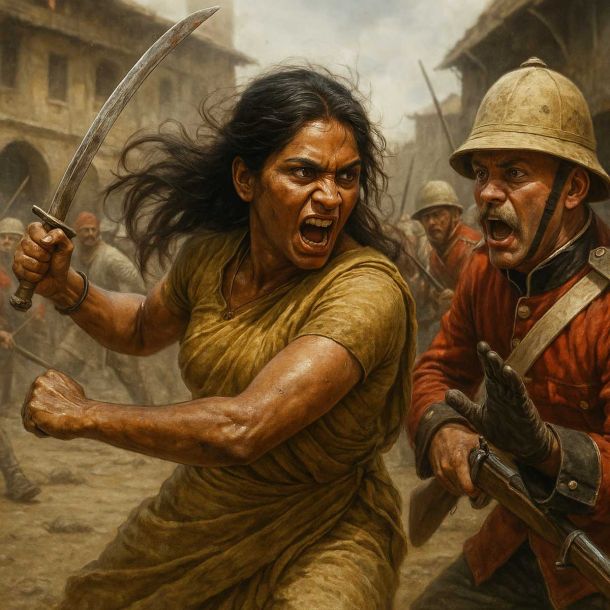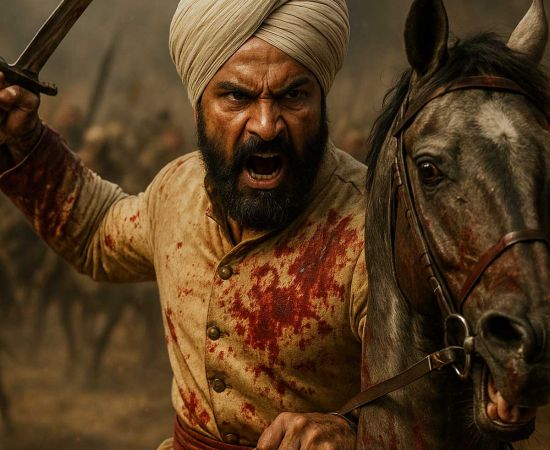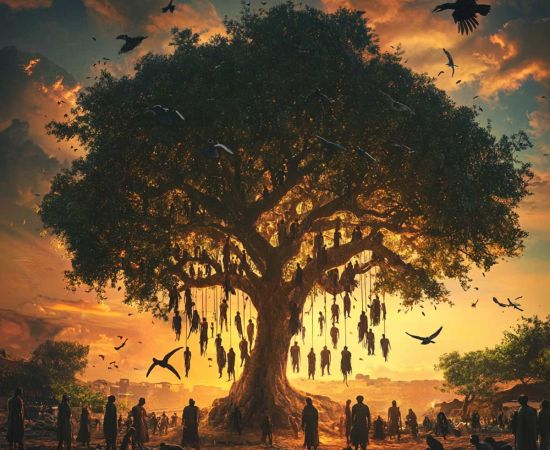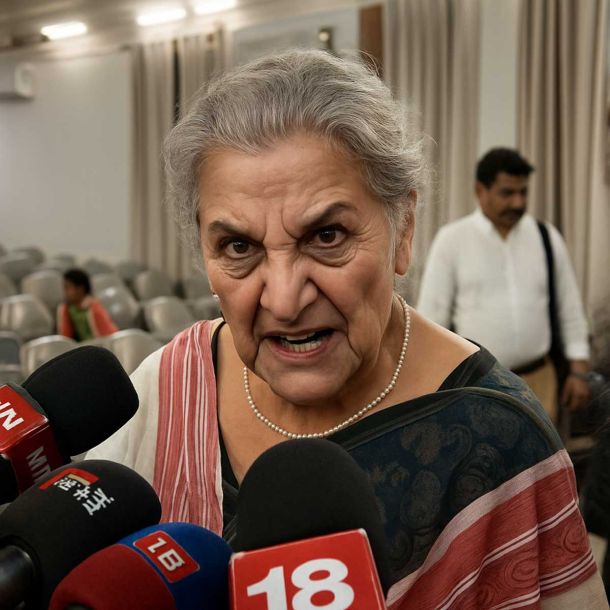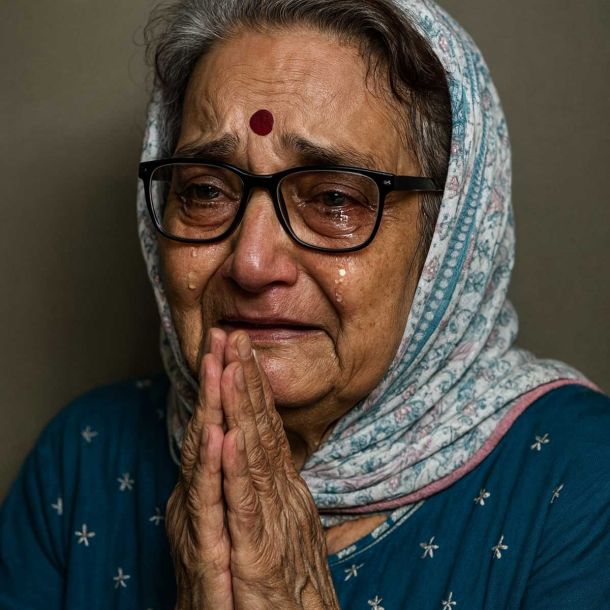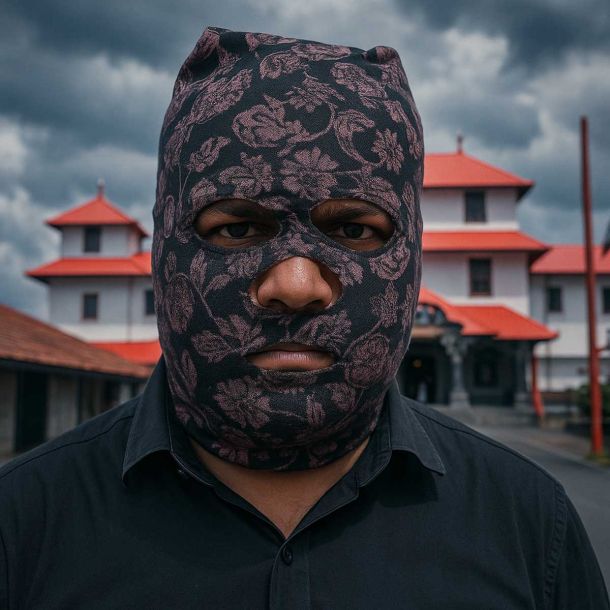MORE COVERAGE
Twitter Coverage
Satyaagrah
Written on
Satyaagrah
Written on
Satyaagrah
Written on
Satyaagrah
Written on
Satyaagrah
Written on
JOIN SATYAAGRAH SOCIAL MEDIA
"And in my last breath, I saw him dancing": A 16-year-old boy's merciless stabbing of another in Delhi, captured on CCTV, with 60 blows in a deranged frenzy, this tragic tale of youth violence unfolds, DCPCR intervenes, hinting at deeper societal failures
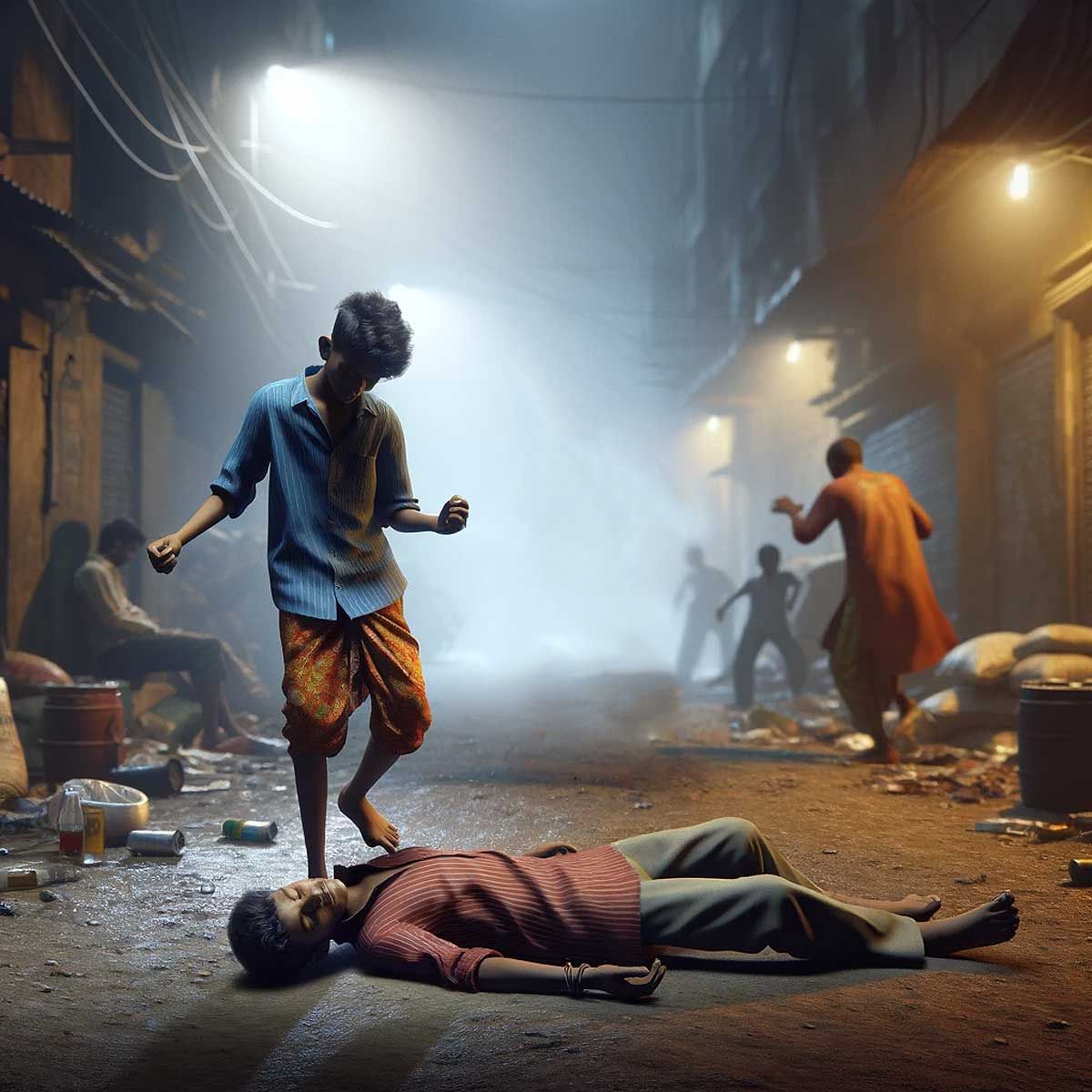
In a chilling incident that has shaken the capital, Delhi Police have apprehended a 16-year-old boy on Wednesday morning, booking him for a horrific act of murder. The gruesome details, as narrated by the police, paint a harrowing picture of brutality in the city's Welcome neighborhood in northeast Delhi.
The teenager, in a frenzied state, repeatedly stabbed a 17-year-old boy, inflicting at least 60 wounds. The violence escalated as the assailant attempted to slice through the victim's neck, kicked his head, and dragged his blood-soaked body around a narrow bylane. What adds a disturbing dimension to this already brutal act is that the attacker occasionally broke into a dance during his savage onslaught.
This horrifying murder, which unfolded beneath the watchful eyes of CCTV cameras, has left the community reeling in shock and disbelief. The act's sheer brutality, especially committed by someone so young, raises grave concerns about the underlying societal issues and the psychological state of the youth involved. The use of dance movements amidst such a violent act points to a deeply unsettling mindset and hints at possible deeper psychological issues. The incident not only calls for a thorough legal response but also prompts a closer look at the social and psychological support systems for young people in our communities.
|
Delhi Police have provided further insights into the tragic murder case in northeast Delhi. The suspect, a 16-year-old boy, was apprehended on Wednesday morning and is now facing murder charges. The boy, who is a school dropout, was reportedly inebriated at the time of the murder, which occurred on Tuesday night. This detail adds a layer of complexity to the crime, suggesting substance abuse as a possible contributing factor.
The young perpetrator resides with his parents, both of whom are daily wage laborers. This background information points to the challenging socio-economic conditions that may have shaped the teenager's life, offering a glimpse into the possible circumstances that led to this tragic event.
The victim of this heinous crime was a resident of the nearby Jafrabad area. He lived there with his mother, who works as a domestic helper. The revelation of the victim's background brings to light the socio-economic context of his family, further deepening the tragedy of the situation.
|
In line with ethical practices and legal requirements, the police have not disclosed the name of the victim, considering his minor status. This decision is important for protecting the privacy and dignity of the victim and his family during their time of grief.
This case, involving a young perpetrator and a minor victim from economically strained backgrounds, highlights several critical societal issues. It underscores the intersection of youth crime with factors like socio-economic status, education, and substance abuse. The incident is a stark reminder of the need for more robust support and intervention systems to address the challenges faced by vulnerable youth in our society.
Investigators have unraveled new details about the shocking murder in Delhi's Welcome neighborhood. According to them, the suspect and the victim did not know each other prior to the incident. The tragic sequence of events began in Janta Mazdoor Colony when the 16-year-old suspect approached the victim asking for ₹350 to buy biryani. When the victim refused, it led to an attempted robbery and subsequently escalated into a violent scuffle. The suspect then choked the victim, rendering him unconscious, as per the police report.
 |
CCTV cameras installed in the neighborhood captured the subsequent events, providing a disturbing account of the murder. The footage, recorded around 10.20 pm, shows the suspect dragging the victim's limp body into a cramped bylane, flanked by houses. What followed was a brutal assault where the suspect repeatedly stabbed the victim’s neck, ears, and face. The footage also shows the suspect pausing intermittently, looking up as if to ward off any passersby who might have witnessed the crime.
This revelation not only adds a chilling layer to the already gruesome act but also raises serious concerns about public safety and the prevalence of violence among youth. The fact that the murder was captured in such graphic detail on CCTV brings home the stark reality of the crime, highlighting the need for increased vigilance and stronger community safety measures. The seemingly random nature of the attack, sparked by a trivial request for money, underscores the unpredictability and potential danger of such encounters, especially in areas where youth may be prone to engaging in criminal activities. This incident is a grim reminder of the need for effective law enforcement and social interventions to address the underlying issues contributing to such extreme acts of violence.
In a continuation of the harrowing details of the murder in Delhi's Welcome neighborhood, investigators provided further insights into the CCTV footage that captured the incident. After the initial brutal attack, the suspect, a 16-year-old boy, resumed stabbing the victim. He momentarily stopped, looking to his right and stepping out of the camera frame, seemingly to speak to someone. During this brief pause, the victim's head movement indicated that he was still alive. However, the assailant swiftly returned to continue his vicious attack.
|
The footage reveals the suspect then pausing again, briefly looking around before escalating his brutality. He stamped on the victim's back and kicked his head. Following this, he knelt down and repeatedly sliced across the victim's neck with chilling precision, proceeding to dig his knife in and twist it.
Approximately a minute and a half into the video, after stabbing the boy around 30 times, the suspect is seen breaking into what is described as a hysterical dance. This bizarre and disturbing behavior during such a violent act is particularly unsettling and highlights the extreme psychological state of the assailant.
The footage captured by the CCTV cameras not only provides a graphic and detailed account of the murder but also a deeply disturbing insight into the behavior of the young perpetrator. The seemingly random and unprovoked nature of the attack, coupled with the suspect's erratic behavior, underscores a significant concern about the mental state and the possible underlying psychological issues of the assailant. The incident raises grave questions about the factors contributing to such extreme violence among youth and the broader societal and mental health implications that need to be addressed to prevent such tragedies in the future.
|
The CCTV footage of the murder in Delhi's Welcome neighborhood continues to reveal the horrifying extent of the crime. The suspect, a 16-year-old boy, was seen dragging the victim’s body to one side. Although the victim was out of the frame at this point, the suspect's relentless stabbing was clearly visible. In a chilling display of brutality, about 12 seconds later, the assailant grabbed the victim by the hair and dragged him out of the bylane.
The local residents, upon discovering the boy, rushed him to GTB Hospital. Tragically, he was declared dead on arrival. This act of community intervention, albeit too late to save the victim, underscores the role that bystanders and local communities can play in emergency situations.
This particular CCTV footage was instrumental in the police investigation. It not only captured the gruesome details of the crime but also helped the police in identifying and apprehending the suspect. The use of CCTV in this case highlights the importance of surveillance technology in both preventing and solving crimes.
Joy Tirkey, the Deputy Commissioner of Police (North-East), clarified that the two boys involved in the incident weren’t previously acquainted. This statement suggests that the murder was not premeditated but rather a horrific outcome of a random encounter. The lack of prior acquaintance between the suspect and the victim adds a layer of randomness and unpredictability to the crime, further complicating the efforts to understand the motives behind such a brutal act.
Deputy Commissioner of Police Joy Tirkey provided a detailed account of the events leading to the tragic demise of the 17-year-old victim in Delhi's Janta Mazdoor Colony. According to Tirkey, the confrontation began when the victim refused to hand over ₹350. The suspect then attempted to rob him. Tirkey stated, “He then choked the 17-year-old. When the victim collapsed, the boy stabbed him multiple times, left him to die and fled with the ₹350 cash.” This account paints a stark picture of the brutality of the attack, with the boy stabbing the victim approximately 60 times, a fact emphasized by Tirkey.
|
Adding to the gravity of the situation, Tirkey also confirmed, “The boy was drunk during the attack.” This information about the suspect’s state of inebriation provides context to the extreme nature of his actions. Being under the influence of alcohol may have contributed to the suspect's escalated aggression and impaired judgment, leading to the heinous act.
The officer's statement not only outlines the sheer brutality of the murder but also brings attention to the tragic nature of the crime, where a minor altercation over a small amount of money led to a fatal outcome. The involvement of alcohol and the extreme violence employed by the young assailant raise serious concerns about the influence of substance abuse among youth and its potential consequences.
Ranjana Prasad, a member of the Delhi Commission for Protection of Child Rights (DCPCR), has indicated that the commission will actively engage in the case involving the brutal murder in Delhi. She stated that the DCPCR plans to intervene and provide counseling to the young suspect. This decision underscores the commission's role in addressing issues related to the welfare and rights of children, especially in situations involving juvenile offenders.
Prasad also reflected on the possible underlying factors that might have contributed to the suspect's actions. She speculated, “The child may not have had an education or a healthy environment at home. He may also have been exposed to violence while growing up...” This perspective suggests a deeper look into the suspect's background is necessary to understand the root causes of his behavior. The lack of education, an unhealthy home environment, and exposure to violence can significantly impact a child's development and may contribute to behavioral issues later in life.
The DCPCR's involvement in the case highlights the importance of addressing the broader social and environmental factors that can lead to such tragic incidents. Counseling the suspect is a step towards understanding his actions and potentially rehabilitating him. It also emphasizes the need for preventive measures and support systems that can help other children in similar situations. Prasad's comments point to the necessity of creating safer, more nurturing environments for children and addressing issues like domestic violence, extreme radicalization, substance abuse, and lack of education, which can have long-term negative impacts on their development and behavior.
 Support Us
Support Us
Satyagraha was born from the heart of our land, with an undying aim to unveil the true essence of Bharat. It seeks to illuminate the hidden tales of our valiant freedom fighters and the rich chronicles that haven't yet sung their complete melody in the mainstream.
While platforms like NDTV and 'The Wire' effortlessly garner funds under the banner of safeguarding democracy, we at Satyagraha walk a different path. Our strength and resonance come from you. In this journey to weave a stronger Bharat, every little contribution amplifies our voice. Let's come together, contribute as you can, and champion the true spirit of our nation.
 |  |  |
| ICICI Bank of Satyaagrah | Razorpay Bank of Satyaagrah | PayPal Bank of Satyaagrah - For International Payments |
If all above doesn't work, then try the LINK below:
Please share the article on other platforms
DISCLAIMER: The author is solely responsible for the views expressed in this article. The author carries the responsibility for citing and/or licensing of images utilized within the text. The website also frequently uses non-commercial images for representational purposes only in line with the article. We are not responsible for the authenticity of such images. If some images have a copyright issue, we request the person/entity to contact us at This email address is being protected from spambots. You need JavaScript enabled to view it. and we will take the necessary actions to resolve the issue.
Related Articles
- Islamist gunmen stormed riding motorcycles attacked predominantly Christian villages, 80 killed, more than 60 abducted and over 115 homes were razed
- ‘Sarkar ko Jhukana and, Hindu-musalman karwana hai… Need to finish Hindus, make a separate nation for Muslims’: Govt counsel continues to present scathing evidence to oppose bail to Umar Khalid
- Prachi Rana, a 15-year-old girl killed in her house at Pratap Nagar in Amb for resisting molestation by Newspaper hawker Asif Mohammad: Accused arrested for silting throat, police urge people not to give it ‘communal’ colour
- "To exact revenge for yourself or your friends is not only a right, it's an absolute duty": Sweden - Muslim Ethiopian migrant, Abushi Shamse Kamal (15) brutally rapes, beats, and strangles little girl Luna (9) with her shoelaces, child left brain-damaged
- "Gone too soon, without a final farewell": In Ambedkar Nagar, a young Hindu girl's tragic death stirs uproar, the accused's father boasts, "I have more sons, doesn't matter if 1 or 2 are jailed", igniting widespread fury and calls for stern justice
- A 15-year-old Hindu boy Nayan Sindhi was stabbed to death by a Class 8 Muslim student in Ahmedabad’s Seventh Day Adventist School sparking protests that grew into violent clashes with vandalism, police lathi-charge and a family rising to demand justice
- "No farewell words were spoken, no time to say goodbye. Gone too soon, yet forever etched in memory": New CCTV footages found in the Sakshi Sahil case that shocked the nation reveals that it was not a ‘crime of passion,’ rather a premeditated act
- Hindu youth Vijaya Kamble stabbed to death for being in a relationship with a Muslim girl, the elder sister of Shahabuddin: Shahabuddin and Nawaz attacked the boy with iron rod, arrested, tension grips Kalaburagi
- "Bravery is not the absence of fear, but the action in the face of fear": IPS Mamta Singh, the Lady Singham, a beacon of courage and dedication heroically rescued 2,500 hostages amidst the Nuh Mewat riots in Haryana, restoring peace and order amidst chaos
- In the latest development in Kishan Bharwad murder case, Ahmedabad police have arrested two suspects, Hindu organizations have called for a bandh protesting against the murder
- "The people who abandon Jihad fall a victim to humility and degradation, Jihad is obligatory for the Muslims": While nation was still mourning over Ankita brutal killing by Shahrukh Hossain, in other #LoveJihad case Yameen Ahmed sl!t throat of Anjali Arya
- "Saying goodbye without words, a heartache that lingers": POCSO Court in Uttar Pradesh delivers justice by awarding the death sentence to a child rapist and murderer Mohammed Faheem in Bulandshahr, sending a strong message against such heinous crimes
- "भाभी 5000 चाहिए": During Ramzan, barber Sajid & Javed sought help for a pregnant woman at their home, when she went inside, they slit throat of her kids, Ayush (11) and Ahan (6), and started drinking their blood, Javed killed in encounter, Sajid on run
- A tragic Instagram love triangle turns deadly in Delhi: Arman Khan, Faisal Khan, and Mohammed Sameer are arrested for the brutal murder of Mahir, who was stabbed more than 50 times in Bhagirathi Vihar. DCP Joy Tirkey spearheads the intense investigation
- "I was upset… you know": Islamist Miyandoab shouting ‘Allahu Akbar’ kills 1, injures 2 others in a knife attack near Eiffel Tower, had spent 4 years in prison earlier for planning a violent attack, was under surveillance and receiving psychiatric therapy

